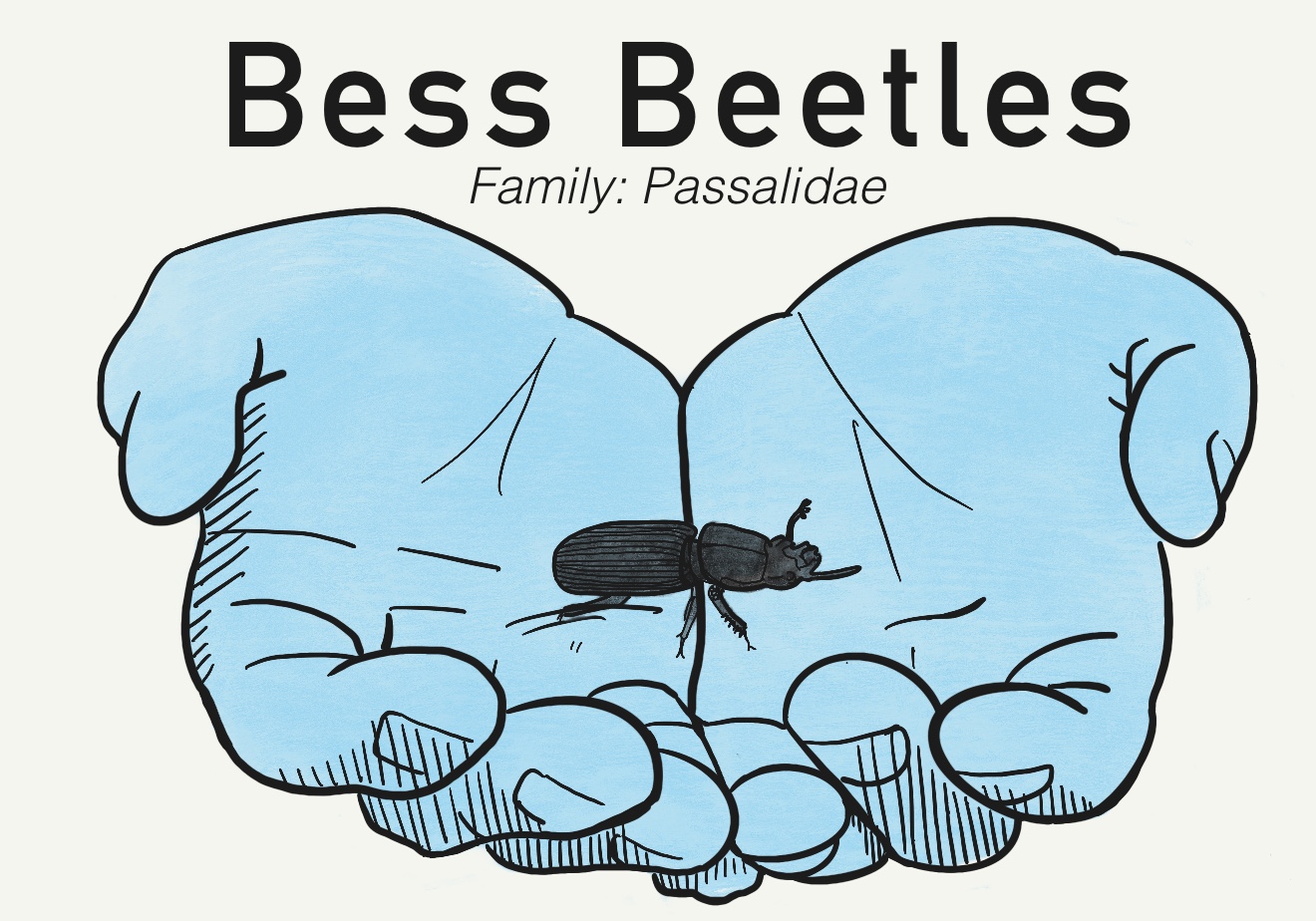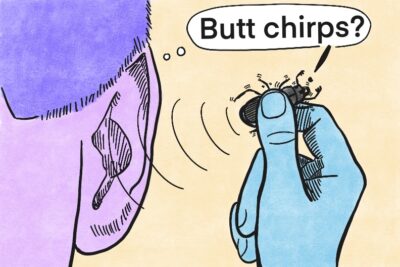The Blug: Bess Beetles
They're here to eat wood and chirp out of their butts
M.K. Manoylov • June 8, 2020

Bess beetles — often found in rotting logs — are slow to move but quick to make a big noise. [Credit: MK Manoylov | CC BY-NC-ND 2.0]
Was it Shakespeare who said, “Shall I compare thee to Passalidae?”
Oops, I think I got my English lit wrong. Here’s some bug lit instead — in the form of The Blug: Scienceline’s bug blog.
What is Passalidae?
Passalidae is the taxonomic family of a group of insects that contain several species and genera (plural form of ‘genus’) of insects called the bess beetles, bess bugs, betsy beetles, or horned passalus beetle.
I’m quite keen on the horned passalus beetle (Odontotaenius disjunctus).
Oh, okay. I’ve never heard of them.
You’ve probably never heard of them because you’ve probably never seen them. Bess beetles live inside decomposing logs or other plant matter on the forest floor, so unless you go trekking through the woods cracking open soft logs or scooping up dead leaves, you’ll probably never see them.
In the USA, bess beetles are found in the south central or eastern part of the country. They also like tropical, wet areas throughout the rest of the world too. In total, there are 500 species of bess beetles.
In case you haven’t seen one before, a bess beetle can look like this:

Of course, species can differ in how they look. My favorite bess beetle, the horned passalus, is black and bullet-shaped with cute little lamellate club antennae. They also have large jaws to chomp through wood and orange flaps of hair around their abdomen or butt, which is where they chirp out of.
They chirp out of their butt?
Yes. Well, no.
When I’ve found bess beetles in Georgia and picked them up, I often thought the sound they were making were coming out of their butts. But it turns out they do something called stridulation. It’s the same way crickets, cicadas, and grasshoppers make noise — they rub together two parts of their body segments or limbs to make a noise. The horned passalus beetle makes noise by rubbing their wings on a structure underneath their wing covers.
So sound comes out of the bullet-shaped part of their body (which includes the butt). They can get kinda loud. The reason they make noise is to defend themselves from predators when out of their log homes.

(Art by MK Manoylov)
So you’ve had conversations with bess beetles?
I, uh… yes.
Are they social with humans?
Still working on that one. Seems to be no.
Maybe cause you ripped them from their home, you monster. Okay, I’ll give you that. But bess beetles are used to life outside of their decayed and easily breakable log. When they’ve chewed and tunneled their way completely through a log, they’ll scurry across the forest floor in search of another one. They have to walk, though, because even though they have wings, they’re fused to their body to the point where they can’t fly.
Bummer for them.
C’est la vie.
What else can you tell me about bess beetles?
I thought you’d never ask!
- They can live for 14 – 16 months after reaching adulthood.
- Though they have strong jaws for eating through wood, they don’t bite humans (and if they do, it doesn’t hurt that bad). They’re actually quite docile, which is why they’re sometimes used as classroom pets.
- Bess beetles co-parent their young, which is unusual in insects. Males as well as females will feed decayed wood to their larvae and will even care for their offspring after they’ve reached adulthood.
- They’re a social insect; multiple generations can live in the same log or colony.
- Because they live in rotting logs and are thus insulated from the weather, you can find them year-round.
- Bess beetles can produce about 14 – 17 types of sounds.
- They’re not considered pests. In fact, the forest needs them to help break down fallen trees.
Also, if you could identify one of these insects down to their family, Passalidae, but don’t know the genus or species, you would call the insect a passalid.
Catch me at the dinner table asking, “What would you like me to do: pass chicken or passalid?”